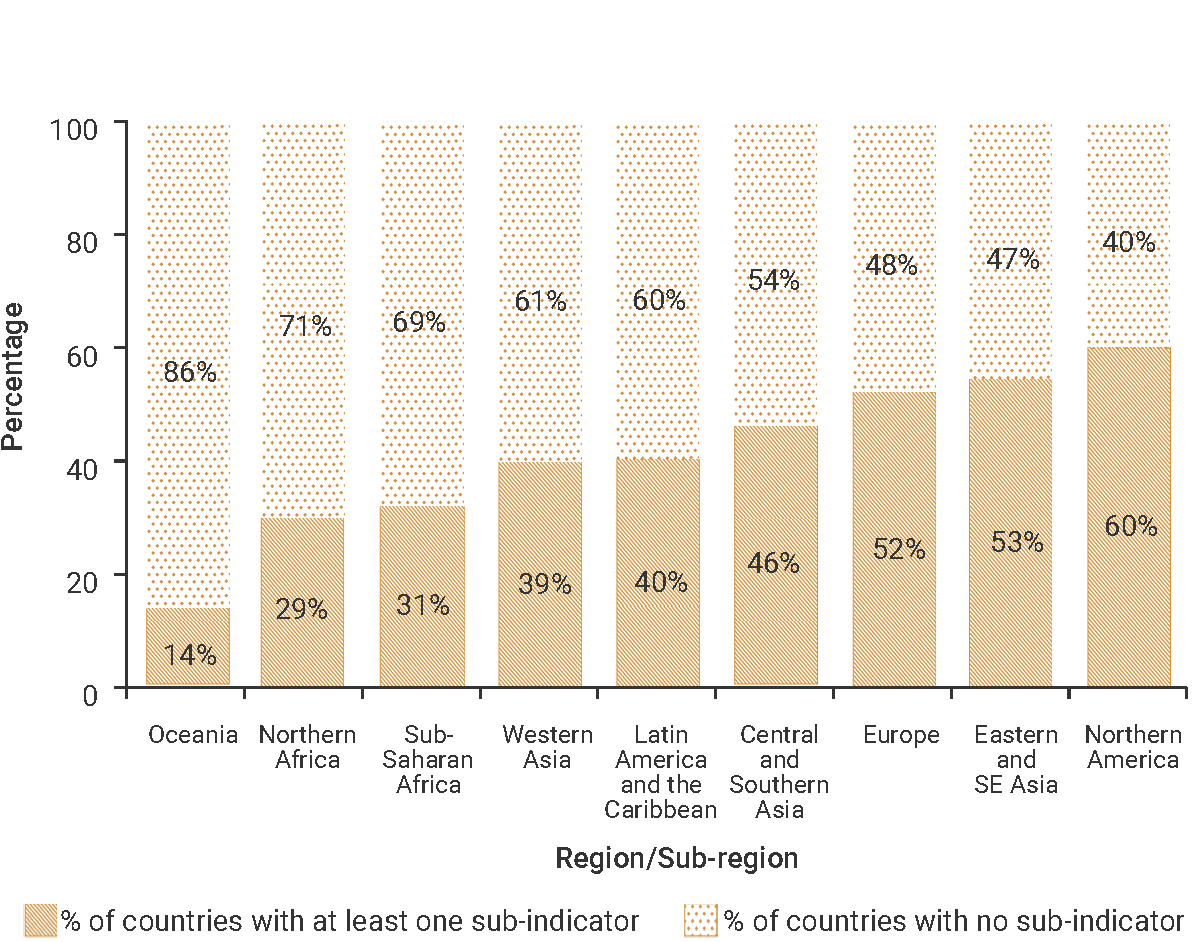SDG Indicator 15.7.1: Proportion of traded wildlife that was poached or illicitly trafficked
1. Key features and metadata
Definition: This indicator measures the share of all trade in wildlife detected as being illegal.
| Sub-indicator | Disaggregated by |
|---|---|
|
Proportion of illegal trade in all traded wildlife (%) |
No current data disaggregation available. |
Sources of information: Reports on the legal trade of the Parties to the Convention on International Trade of Endangered Species (CITES) are used for the legal trade. Data on wildlife seizures reported by Parties to CITES through Annual Illegal Trade Reports (AITR) – as well as several other sources, including international organizations, NGOs and open sources – are used for the detected illegal trade.
Related SDG Indicators: 15.1.2 (Proportion of important sites for terrestrial and freshwater biodiversity that are covered by protected areas, by ecosystem type), 15.2.1 (Progress towards sustainable forest management) and 15.5.1 (Red List Index).
2. Data availability by region, SDG Global Database, as of 02 July 2025

3. Proposed disaggregation, links to policymaking and its impact
| Proposed disaggregation | Link to policymaking | Impact |
|---|---|---|
|
Proportion of illegal trade in all traded wildlife seized from national origins (%) (UN 2020a) |
Thisdisaggregationprovides relevant information for assessing the effectiveness of, or need for, national policies addressing poaching and the trafficking of protected species of flora and fauna (United Nations Office on Drugs and Crime [UNODC] n.d.a). This data can be used to develop targeted efforts, including global support, to combat poaching and the trafficking of protected species and may also be used to reduce national supply and demand trends driving the illegal wildlife trade. |
The decline in wildlife populations has long-term negative impacts on local communities as it deprives them of their natural wealth and livelihoods, deepens poverty and inequality and threatens national security by causing instability and fueling conflicts. By gathering, analyzing and disseminating national data on illegal trafficking, Parties to the CITES convention will be able to better inform decision-making and support the development of appropriate steps to halt and reverse wildlife crime, increase the capacity of local communities to pursue sustainable livelihood opportunities and promote a wildlife-based economy (Convention on International Trade in Endangered Species of Wild Fauna and Flora [CITES] 1973). |
|
Proportion of illegal trade in alltraded wildlife, by origin of seized species/products (%)(UN 2020a) |
Understanding the origin of seized emblematic wildlife species and productsis critical for monitoring the geographical trends of illegal trade for those species or products and tailoring relevant strategies and policies (UNODC n.d.b). Combatting the illegal wildlife trade requires the reinforcement of regulatory frameworks along the value chain by apprehending, prosecuting and convicting those engaged in poaching and trafficking. Logistics companies (i.e. shipping, airline and land-based transport) that operate the import, transit and export of goods must take measures to prevent the abuse of their services for illicit wildlife trafficking. |
As far as the countries of origin are concerned, the illicit trade of wild fauna and flora has the effect of diminishing species populations and can result in local and sometimes global extinction whenever endangered species are involved. In addition, it can affect the sex-ratio and reproduction of the most vulnerable species. It therefore contributes to the extinction crisis and biodiversity loss as well as undermining the efforts rolled out by countries to manage their wildlife. In the same way, halting illegal trafficking would generate revenue for populations, particularly in less developing countries, by benefitting more from legal trade. It would also positively impact on the livelihoods of rural populations who rely the most on wildlife (e.g. for self-consumption, local industries or eco-tourism) (Trade Records Analysis of Flora and Fauna in Commerce [TRAFFIC] 2024). |
|
Proportion of illegal trade in alltraded wildlife, by destination of seized species/ products(% by country) (UN 2020a) |
This type of information is critical for monitoring the trends in illegal trade for those species or products, tailoring relevant strategies and encouraging cooperation and policy development between countries of origin and destination to halt poaching and illicit trafficking (CITES 2022).
|
At the local level, illegal trafficking of wildlife or plants and poaching is a consequence of poverty, corruption and insufficient enforcement (UNODC n.d.a). On the demand side, combatting the illegal wildlife trade requires the reinforcement of national policies (both in developed and developing countries) as well as private sector and consumer awareness – to reject illicit practices, improve the understanding of what drives consumer behavior and support campaigns to change that behaviour. |
|
Proportion of illegal trade, by wildlife seizures trends for emblematic species(%) (UN 2020a) |
Emblematic species are of special interest to the public and also in terms of their contribution to ecosystem regulation (UN 2020a). This type of information is critical for monitoring the evolution of the illegal trade in those species and for addressing more effectively the problems. It supports the search for short- and long-term solutions in origin, transit and destination countries, by increasing the size of conservation areas and resource projects that benefit local communities. It is alsouseful for improving the management of these species, ensuring ecosystem-based integrated land use planning, strengthening the enforcement of environmental law, and providing opportunities for development through nature-based tourism. |
Increasing capacity to combat wildlife crime and promoting the conservation of habitats and wildlife of emblematic species can create an enabling environment. This supports wildlife-based economies; promotes partnerships between local communities, private sector partners and/or governments; helps manage human-wildlife conflict; promotes co-existence; and increases the financial resources for wildlife and habitat conservation (TRAFFIC 2024). |

